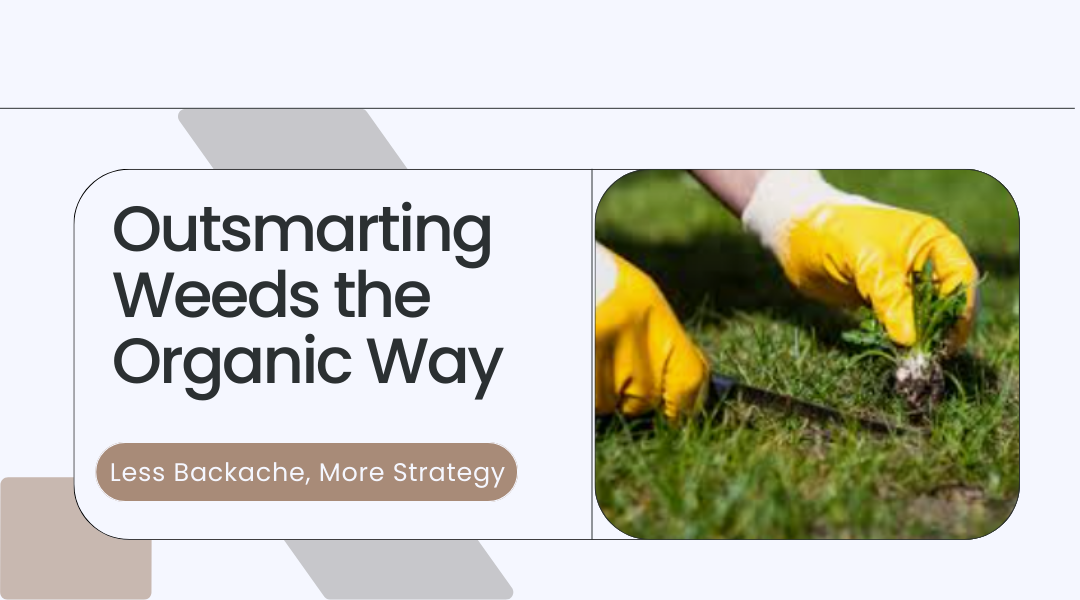The Weed Paradox
Any organic farmer who claims to have zero weeds is either lying or not growing much food. Weeds are nature’s ultimate opportunists, and trying to eradicate them completely is like playing whack-a-mole with a thousand hammers. The smarter play? Tipping the balance in your favor so crops thrive while weeds become manageable, even useful.
I learned this the hard way my first season, when a charming little patch of purslane I ignored in May had turned into a green carpet smothering my carrots by July. Now, after a decade of organic growing, here’s what actually works.
Know Thy Enemy (and Sometimes Ally)
Weeds fall into three sneaky categories:
- The Flash-in-the-Pan Gang (Annuals)
- Think: Lamb’s quarters, chickweed
- Their game: Sprout, seed, and die in one season—but boy, can they seed.
- Weakness: Never let them flower. Period.
- The Two-Year Schemers (Biennials)
- Think: Burdock, Queen Anne’s lace
- Their game: First year—innocent rosette. Second year—six-foot seed towers.
- Weakness: Dig the taproots before year two.
- The Zombie Army (Perennials)
- Think: Bindweed, quackgrass
- Their game: Underground networks that laugh at hoeing.
- Weakness: Exhaust their roots with repeated cutting or smothering.
Pro Tip: Some “weeds” earn their keep. Dandelions mine calcium from deep soil. Clover fixes nitrogen. Learn which ones to tolerate where.
Hands-On Weed Warfare
For Small Gardens:
- The ‘Morning Coffee Patrol’: Spend 10 minutes daily yanking seedlings after dew softens the soil. Less work than marathon weekend battles.
- The ‘Hula Hoe Shuffle’: That swooshing stirrup hoe? Your best friend for slicing weeds at the surface without bending.
For Bigger Plots:
- The ‘False Bed’ Trick: Till, water, wait 10 days. Let weed seeds germinate, then flame-weed or lightly hoe before planting crops. Cuts weeding by 60%.
- The ‘Tractor Tantrum’: Perfect timing matters. Cultivate when weeds are “white-thread stage”—just germinated but not yet photosynthetic.
Brutal But Effective:
- Black Plastic Summer: Solarize tough perennial patches with clear plastic for 6 weeks. Cooks roots to 130°F.
- Pig Power: (If you have them) Rotational grazing hogs obliterate bindweed and fertilize simultaneously.
Mulch Like a Boss
Best Organic Mulches:
- Straw (not hay—unless you want a wheat crop) – 4 inches stops most annuals
- Wood chips – For paths and around perennials
- Living mulch – Low-growing thyme or clover between crop rows
Weird But Works:
- Newspaper layers (soaked first) under straw—biodegrades by season’s end
- Wool pellets – Pricey but slugs hate them and they hold moisture
Mulch Fails to Avoid:
- Grass clippings with herbicide residue (ask me how I know)
- Fresh sawdust (steals nitrogen as it breaks down)
Cover Crops: Your Secret Weed Fighters
The Heavy Hitters:
- Buckwheat – Smothers weeds in just 3 weeks, bees adore it
- Winter rye – Releases weed-suppressing chemicals as it grows
- Crimson clover – Pretty flowers, fixes nitrogen, chokes out invaders
Advanced Move:
Roller-crimp cover crops at flowering to create a thick, weed-blocking mat you can plant right into.
The Long Game
Healthy soil grows fewer weeds. It’s that simple. Each year you:
- Add compost
- Avoid compaction
- Rotate crops
…you’ll notice the weeds shift from jungle to occasional visitors.
Final Wisdom:
“One year’s seeds equals seven years’ weeds” isn’t just a saying—it’s a warning. Stay ahead, stay observant, and remember: The best organic weed control isn’t a single tactic. It’s the accumulated effect of many small, smart choices season after season.
